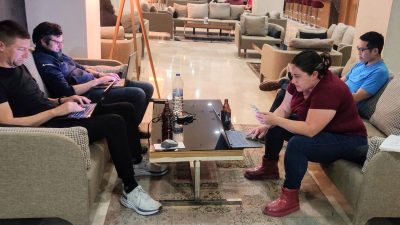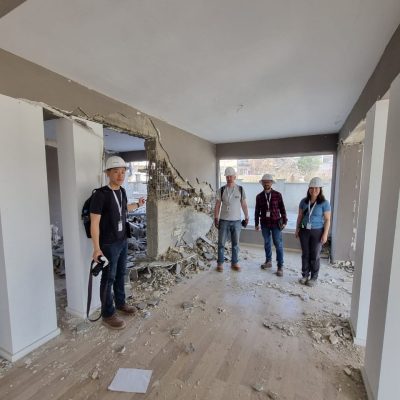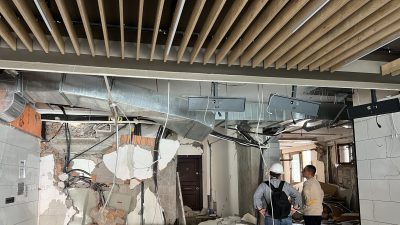March 4, 2023 – Day 5, Team 1
We started today by driving to Tepehan. There was a news story that had been circulating about an olive grove where a canyon opened up in the earthquake and we wanted to see it for ourselves.
On the way, the road reduced to one lane in either direction as we crossed over a bridge. The adjacent bridge was badly damaged, so we stopped to take a look. The roadway leading up to the bridge had large cracks and ground movement and exposed the soil below the roadway with no apparent underlayment. The bridge was supported by abutments set on three concrete drilled shafts each. The abutments had rotated, and the bridge had come off of its bearings and had been pushed upward as a result of the rotation. We also saw that the bridge we had just driven over had suffered a similar failure, though not to the same extent. As we had just driven over it and there was a steady stream of cars still driving over, we hoped that somebody had evaluated it for continued use.
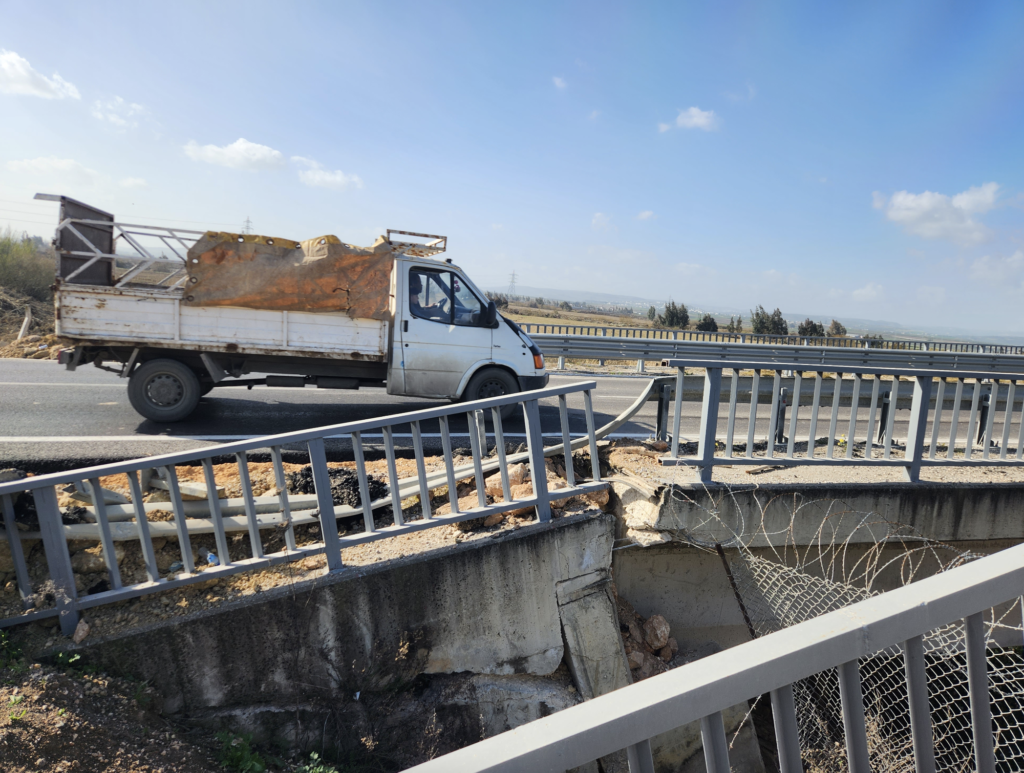
Car passing over concrete bridge, with rotated abutments, on our way to Hatay.
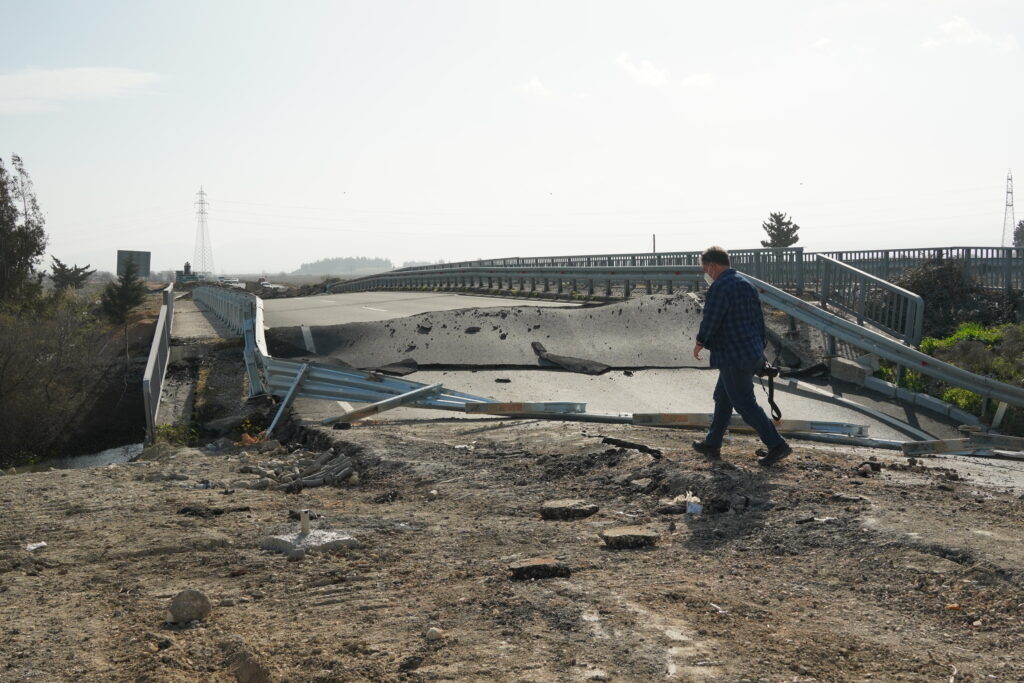
Severely damaged concrete bridge.
The olive grove at Tepehan was quite the sight. A canyon hundreds of feet across and over one hundred feet deep now sat where just weeks before was a plain field of olive trees. Pure clay that had spent eons undisturbed was now exposed. Our team had a geotechnical engineering professor, Dr. Yildirim from Bogazici University in Istanbul, joining us out on the field and we benefited from her insight regarding the possible geological impetus for such an event. Despite the proximity to the newly formed canyon, the village of Tepehan, suffered minor to moderate damage from our observations. The town primarily had single- to two-story residential structures, which was also a notable contrast to the seven to 10-story apartment buildings consistent across previous sites.
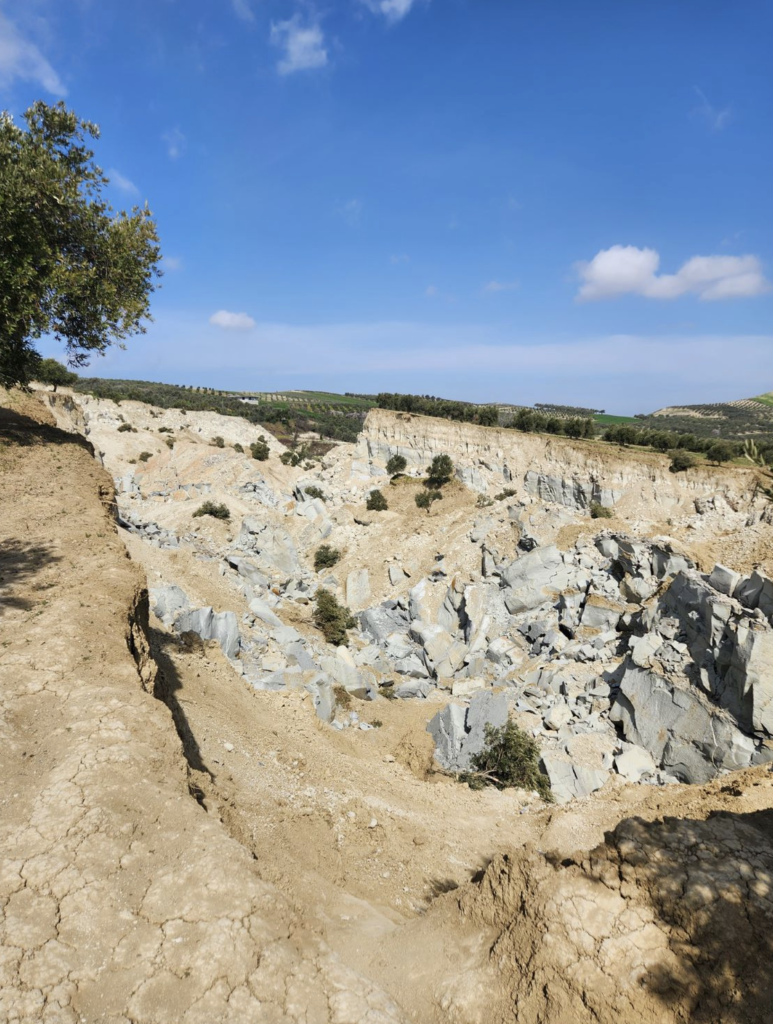
Newly formed canyon at the olive grove in Tepehan.
From Tepehan, we headed to Antakya in Hatay province, which had been reported as a site of vast loss of life and infrastructure. Upon our arrival, we headed to a residential complex composed of five apartment buildings ranging from eight to nine stories in height, now with four-fifths of buildings completely collapsed. The site was closed off by a few police officers, and a previous resident who told us about the sequence of building collapses. The buildings had collapsed on their sides and had partially fallen into the remaining building. The resident also told us about the estimated loss of life at this location, which was a staggering number. We gathered what information we could from the only building remaining standing and its surrounding rubble.
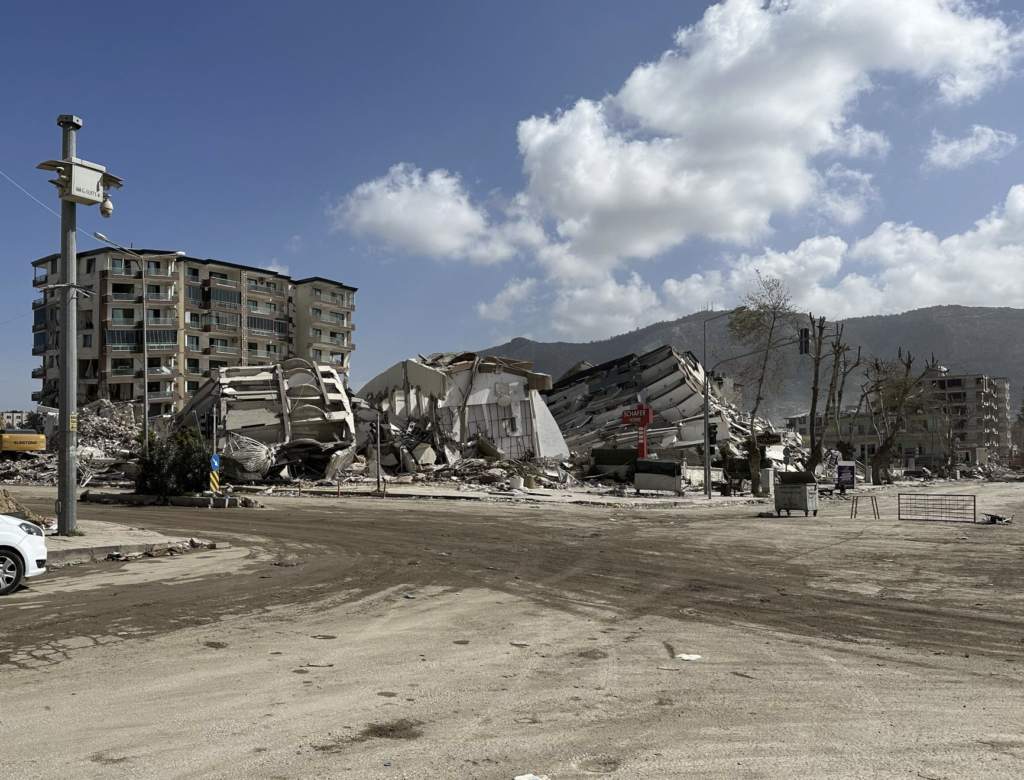
Residential apartment complex, where there previously stood five apartment buildings, now predominantly collapsed.
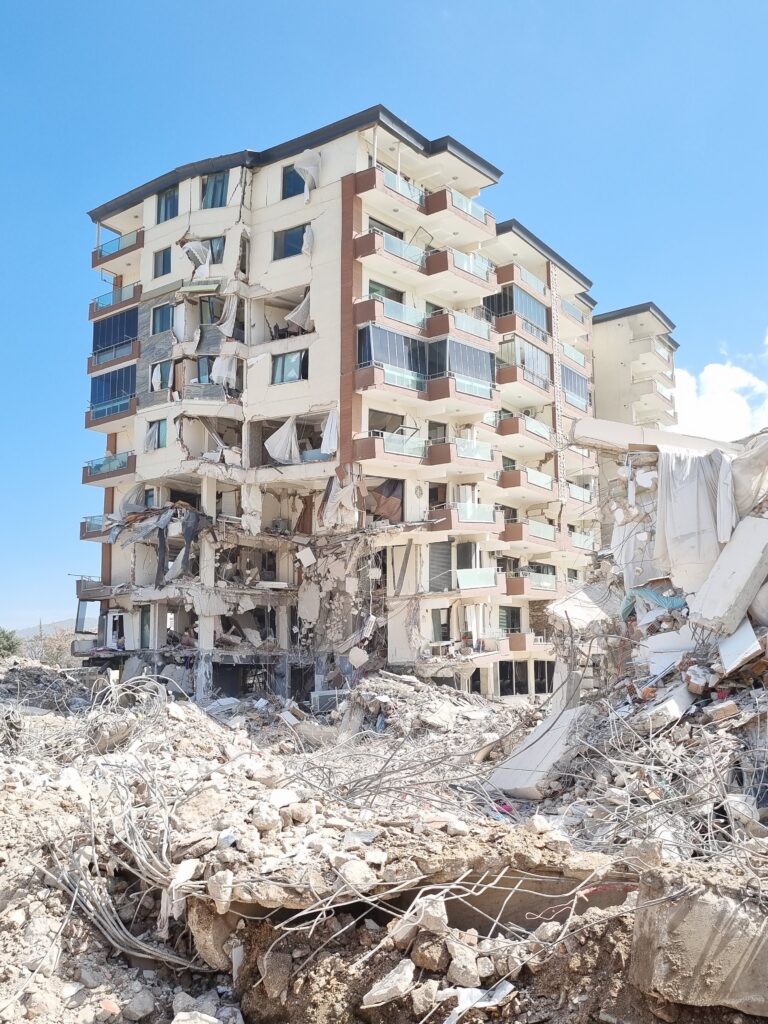
Remaining apartment building with a few columns were taken out due to the adjacent building collapsing into it.
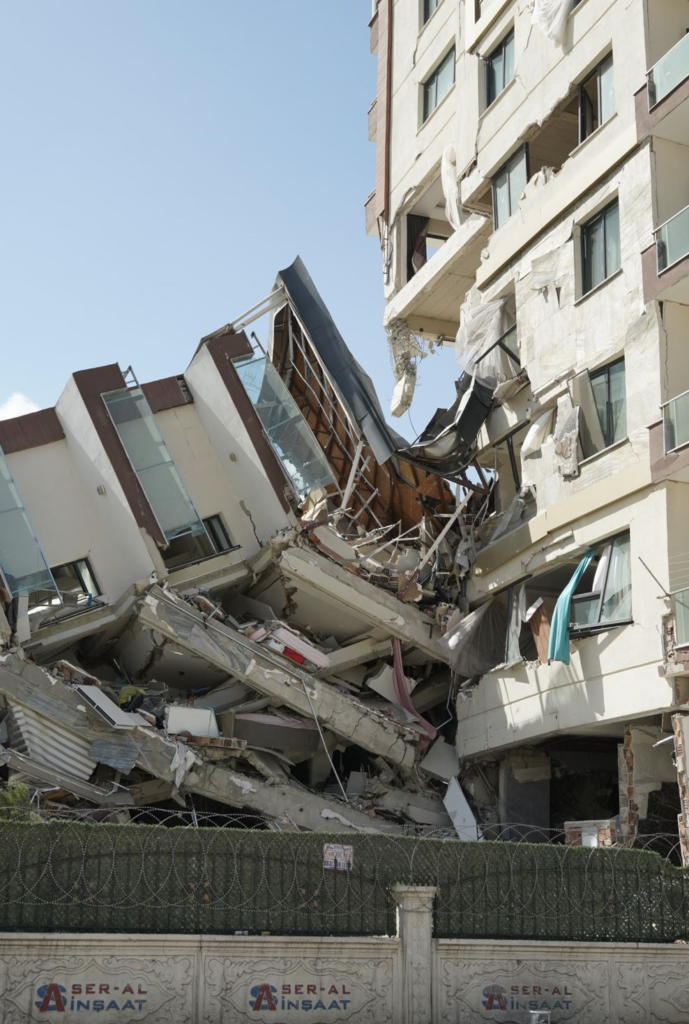
Damage to the other side of the remaining apartment building; several columns on this side of the building were taken out as well.
As we walked and drove through the rest of the town, we observed the same threads of destruction that linked the entire region affected by these earthquakes together: hollow clay tile in-fill damage, soft story failures, poor concrete detailing and construction, buildings falling into adjacent buildings, and smooth rebar use in older buildings. The difference was the scale of the issue. In other towns, there would be several city blocks that were leveled then areas with some collapses and significant damage. Others would have some buildings damaged but several performing well. In Antakya, every single building was collapsed or close to it. The damage was so intense that the demo crews hadn’t had time to make as much progress as in other cities, so we witnessed many more buildings in severe conditions than elsewhere.
We also observed a very different kind of building that we had not yet found elsewhere. A luxury hotel built over an anthropological site discovered during construction, primarily constructed of steel. From the outside of the building, we could observe very little damage, limited to some effects at replaceable steel connections and foundation rocking. It was surprising to see the contrast between the destruction occurring a few blocks from this building.
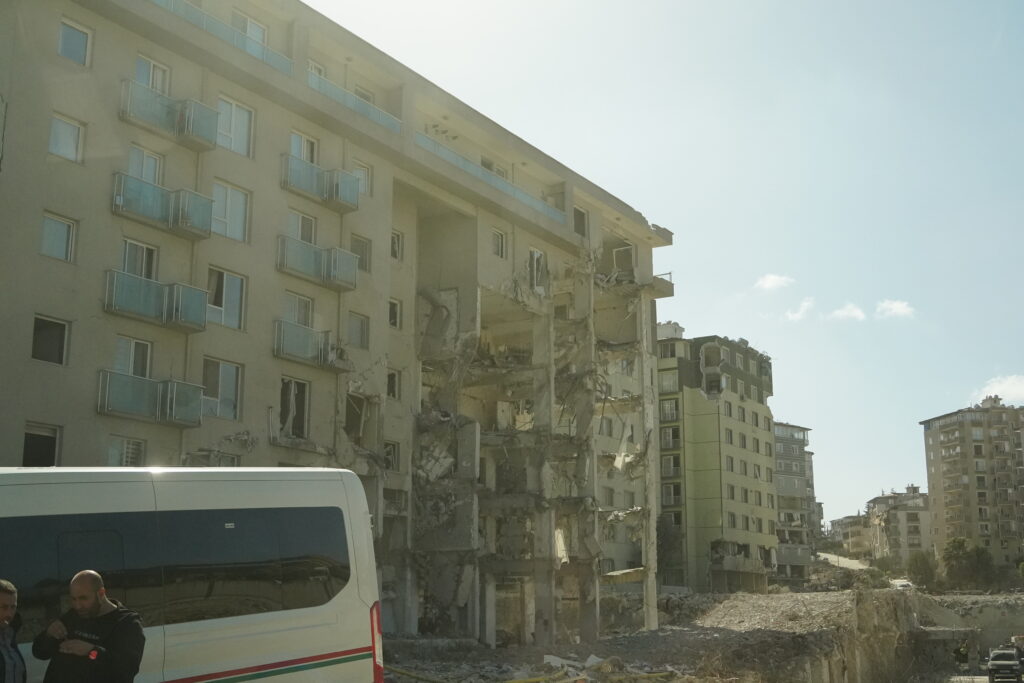
Widespread damage observed throughout Antakya
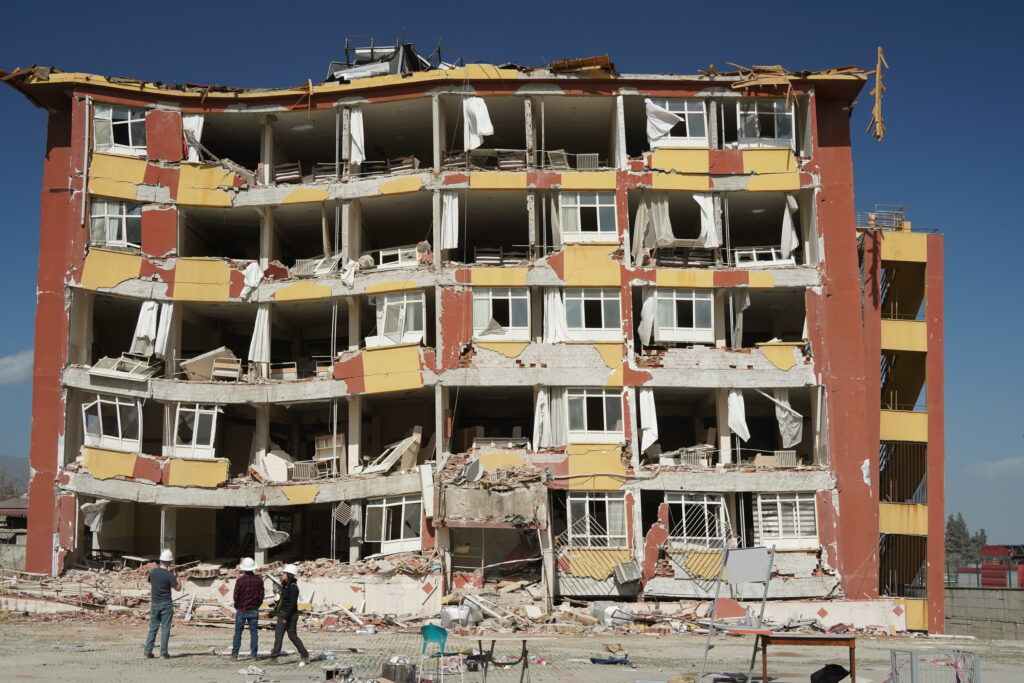
David, Jose, and Kim observe a building with heavy damage and ground floor column collapse
On our way out from the city center of Antakya, we visited a university campus. The ground shaking appeared to be less severe in this area, as buildings similar to collapse sites downtown had minimal structural damage. Throughout the campus, we observed typical non-structural damage coupled with some structural damage at columns due to pounding.
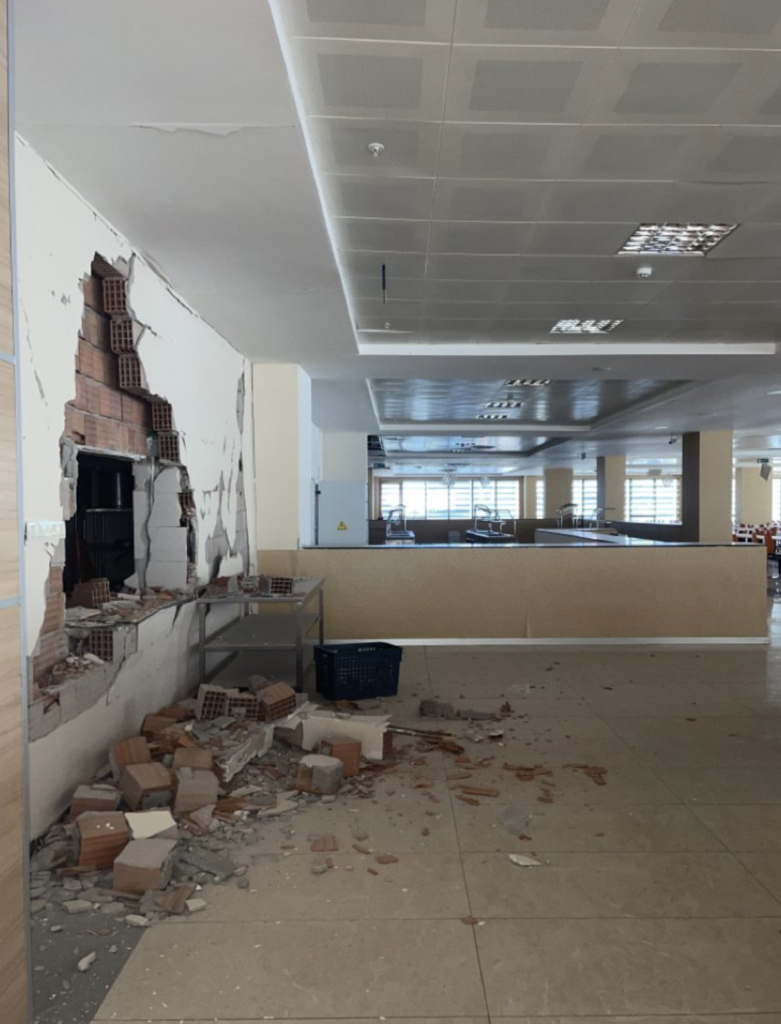
University building with hollow clay infill damage.
The trip back to Gazientep from Antakya was a long and quiet one. We agreed that the day was one of the most difficult for everyone. At today’s location, the magnitude of loss—both in tragic loss of life as well as the upheaval for survivors—could be felt by all of us.

